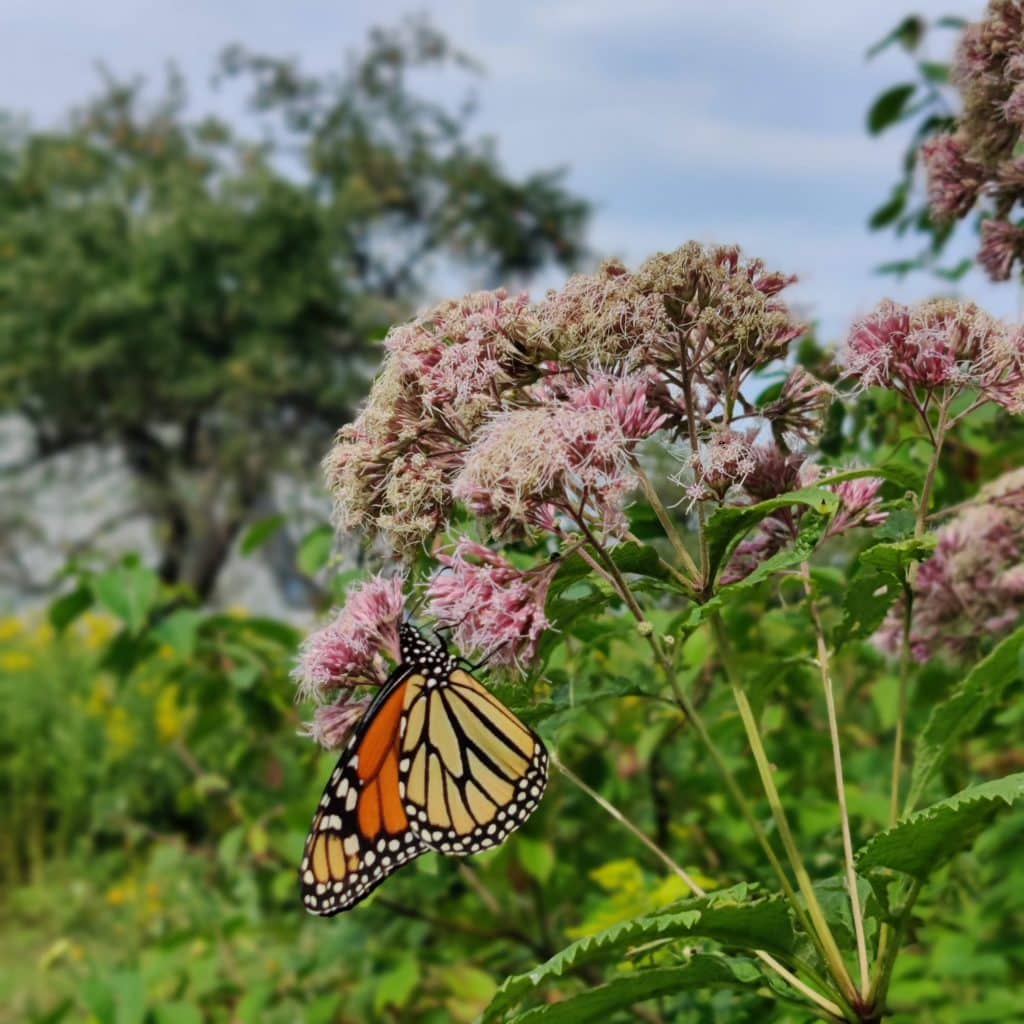
It’s February in Maine, and there’s nothing like a good snowfall to remind us of our connection to nature. Whether you’re ready for spring or pining for more snow, all gardeners can relate to the warmth that comes from dreaming of the coming growing season. While we’re still a few months away from the action, this can be one of the most important times of year for the ecological gardener. Before getting our hands dirty, as ecologically responsible practitioners, we must devote ourselves to asking why we are doing this, and what is the best path forward.
Master Planning: Before a single trowel touches the earth, anyone who owns, rents, leases or maintains a landscape should start by creating a master plan: A document that will inform and guide your relationship with the place and ensure the most ecologically responsible path forward. This document should include the creation of a base map, from which one can conduct a site assessment. This process often gets delegated to landscape architects and industry professionals, and may seem overwhelming to the everyday gardener. However, love it or hate it, technology has provided us with a plethora of tools that make this process more accessible than ever.
Base Map: Of all the tools technology has given us, Google Maps may be the most helpful for landscape designers. A master plan consists of many layers. The first layer, the base map, can be obtained by entering your address into Google Maps. Look for the “Layers” tab, choose Satellite, and take a screenshot of the area. A scale bar can be found in the lower right corner of the map, and is a critical component, especially later in the site planning process, so be sure to include the scale in your screenshot.
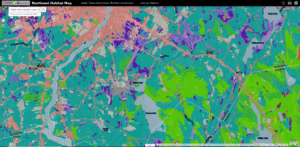 Site Assessment: Observation can not be overemphasized in its importance. If the luxury of time is available, observing a landscape through the entirety of the growing season (and beyond) will yield more knowledge and create an intimate connection to the place. Technology is no substitute for this relationship to the site! To assist and enhance this process, online tools can help you identify the surrounding ecosystems. The Nature Conservancy, a global environmental nonprofit, has launched a GIS mapping website, the Northeast Habitat Map, which identifies the various ecoregions across New England and Maine. Zoom in and out, and you’ll see that various colors represent different ecoregions. For example, in Maine, a common ecoregion is the Laurentian-Acadian Wet Meadow-Shrub Swamp (marked by light gray squares on the map). Click on different ecoregions to access the data sheet, which includes a description of the habitat, typical plant species, and similar habitat types. Many of the native plants listed could be a great starting point when considering what plants to add to your landscape.
Site Assessment: Observation can not be overemphasized in its importance. If the luxury of time is available, observing a landscape through the entirety of the growing season (and beyond) will yield more knowledge and create an intimate connection to the place. Technology is no substitute for this relationship to the site! To assist and enhance this process, online tools can help you identify the surrounding ecosystems. The Nature Conservancy, a global environmental nonprofit, has launched a GIS mapping website, the Northeast Habitat Map, which identifies the various ecoregions across New England and Maine. Zoom in and out, and you’ll see that various colors represent different ecoregions. For example, in Maine, a common ecoregion is the Laurentian-Acadian Wet Meadow-Shrub Swamp (marked by light gray squares on the map). Click on different ecoregions to access the data sheet, which includes a description of the habitat, typical plant species, and similar habitat types. Many of the native plants listed could be a great starting point when considering what plants to add to your landscape.
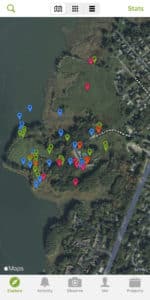
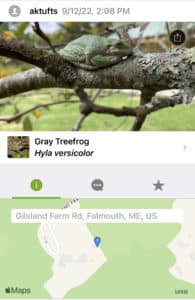 Site Inventory: As part of your site assessment, prior to introducing any new species or disturbance, try to gain an understanding of what is already there. As mentioned before, observation is your greatest tool. However, once again, technology has provided us with a tool that should not be ignored. Whether you’re looking to identify plants, insects, birds, or other wildlife, iNaturalist is a wonderful tool that utilizes mapping to document the natural world and create an ever-expanding inventory. For example, at Maine Audubon’s Gilsland Farm location, hundreds of species have been identified, ranging from native goldenrod in the meadows, to a tree frog in the orchard.
Site Inventory: As part of your site assessment, prior to introducing any new species or disturbance, try to gain an understanding of what is already there. As mentioned before, observation is your greatest tool. However, once again, technology has provided us with a tool that should not be ignored. Whether you’re looking to identify plants, insects, birds, or other wildlife, iNaturalist is a wonderful tool that utilizes mapping to document the natural world and create an ever-expanding inventory. For example, at Maine Audubon’s Gilsland Farm location, hundreds of species have been identified, ranging from native goldenrod in the meadows, to a tree frog in the orchard.
Book Recommendations: An abundance of great books have been written on ecological gardening, especially in recent years. A great place to start would be the reading list from Maine Audubon’s Bringing Nature Home Book Club.
Finally, while these tools should be utilized to their fullest potential, a conversation with your neighbors is perhaps the best method of all for gathering data through a shared love of the natural world. And as always, your friends here at Maine Audubon are always happy to connect and answer any questions.
P.S. If you’re interested in learning more about how to create an ecological master plan, there are still spaces available for the Bringing Nature Home Design Workshop at our Fields Pond location, in Holden, Maine, on Saturday, February 18, from 9 am to 3 pm.
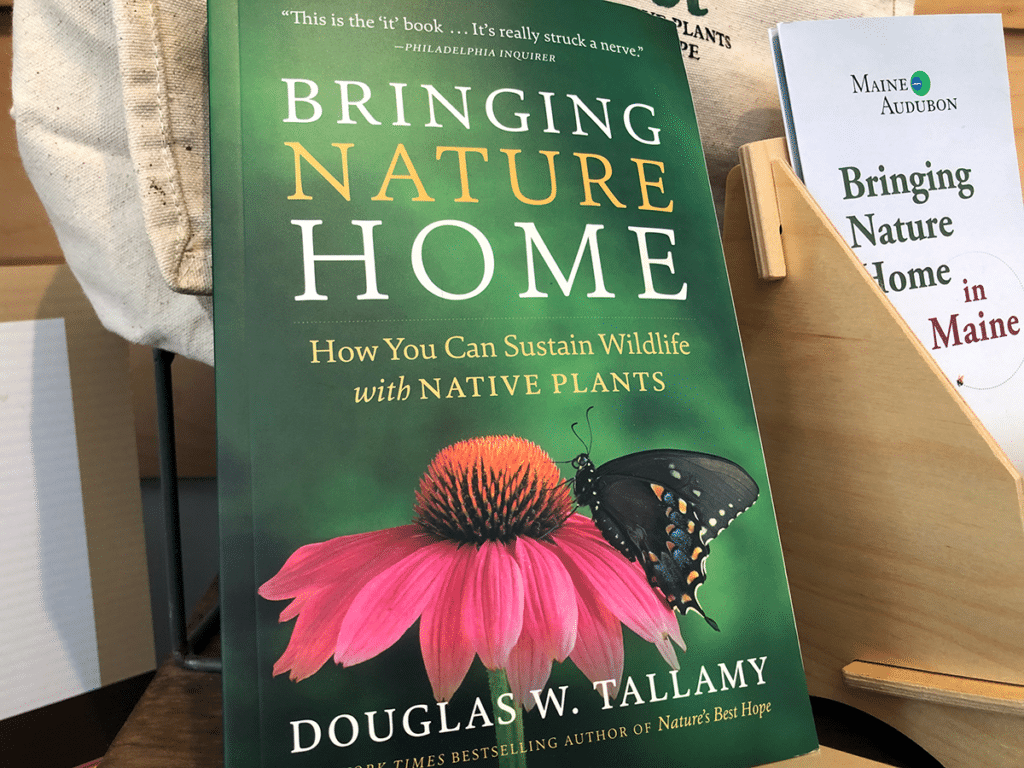
‘For the first time in its history, gardening has taken on a role that transcends the needs of the gardener. Like it or not, gardeners have become important players in the management of our nation’s wildlife. It is now within the power of individual gardeners to do something that we all dream of doing: to make a difference. In this case, the ‘difference’ will be to the future of biodiversity, to the native plants and animals of North America and the ecosystems that sustain them.’
-Doug Tallamy, ‘Bringing Nature Home’
